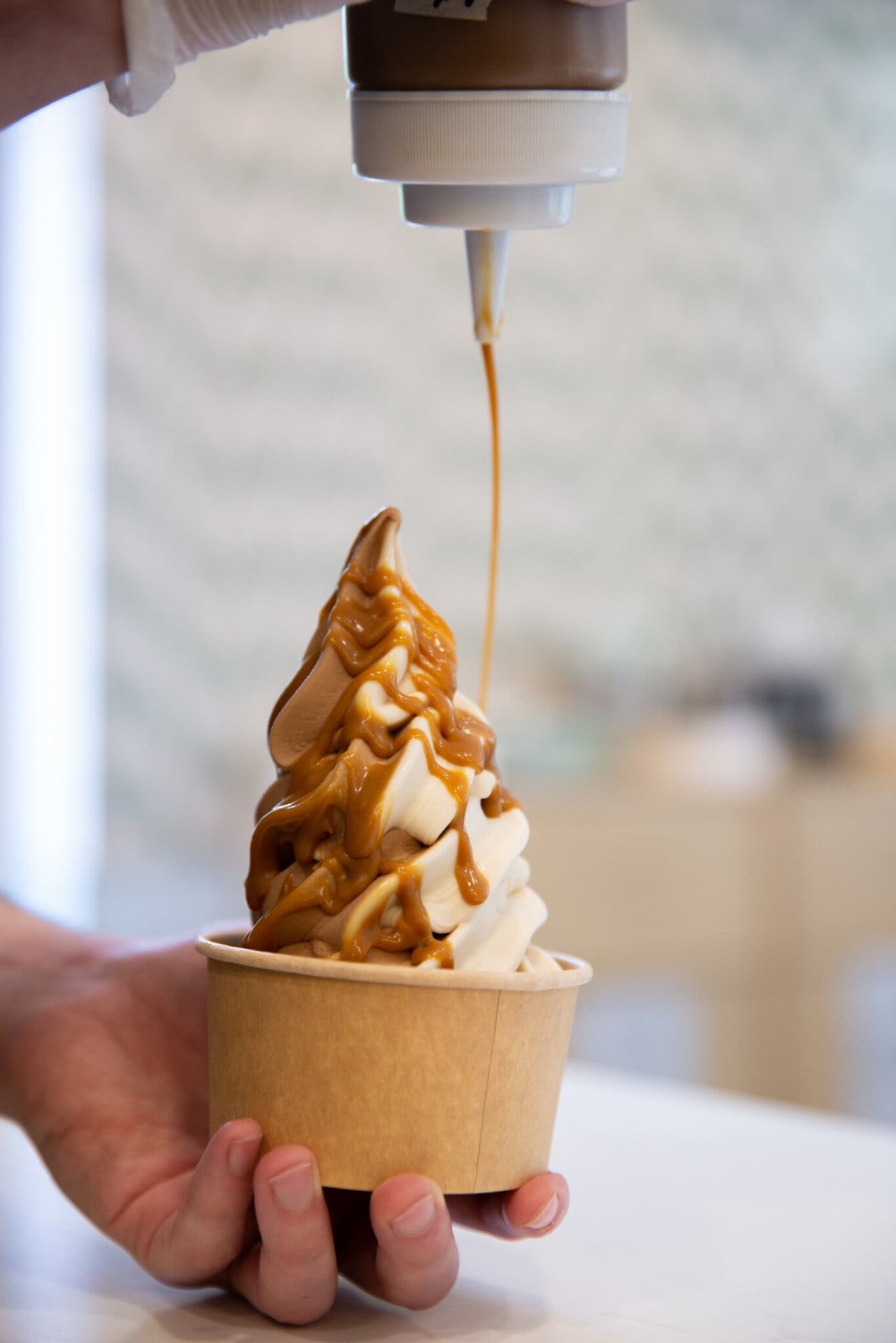
This article is more than
2 year oldIt’s Never Been a Better Time for Vegan Ice Cream

Over the last decade, as dairy-free ice cream gained a foothold in the commercial market, its flavors were limited, its texture was often watery and its taste could be questionable.
Today, many of these ice creams are smooth and creamy. They can twirl like soft serve and pack into scoops for waffle cones. And the options for both soft and hard versions have vastly improved as the plant-based milk and creamers used to make them have gotten better.
At Morgenstern’s Bananas, a nondairy soft serve shop that opened this year on the Lower East Side, Hanna Darnell filmed herself in May trying a cup of dairy-free salted peanut soft serve topped with sesame Chex for a TikTok video.
“It was just as creamy as regular soft serve,” said Ms. Darnell, 26, who lives in Williamsburg, Brooklyn. “I was shocked.” She said she doesn’t eat a plant-based diet, but since posting that video, she has gone back to the shop three times.
Sales of plant-based foods in the United States surged in 2020, when the pandemic got many people thinking harder about their health, according to the Plant Based Foods Association, a trade group representing more than 350 plant-based food companies. Many turned to eating nondairy ice cream, which accounted for $437 million in sales last year. Shops dedicated solely to dairy-free ice cream have proliferated as more Americans adopt plant-based diets or seek desserts that accommodate their allergies and dietary restrictions.



The industry is still growing, but at a slower rate, said Julie Emmett, the vice president of marketplace and development for the trade association. Her colleague Linette Kwon, a data analyst, added that improvements in plant-based milks — especially oat milk, which is creamier and has a natural sweetness — have cleared the way for better-tasting dairy-free ice cream.
The new shops use a variety of milks — like almond, coconut, soy or cashew — for their ice cream bases. Soy milk, for example, has more protein than some other plant milks, and produces a smoother texture. Like oat milk, cashew milk is creamy.
Consumer research from the trade group also indicated that people who don’t eat vegan or vegetarian diets tend to prefer brands that use the phrase “plant-based” to describe alternatives to dairy ice cream, Ms. Emmett said. The term “vegan,” she said, can be polarizing.
For people with multiple food allergies, shops like Vaca’s Creameryin Chicago focus on the ingredients and reducing cross-contamination with allergens.
“It’s a safe space,” said Dylan Sutcliff, who owns the business with his partner, Mariana Marinho. “People don’t have to watch their backs for allergies or dietary restrictions.”
The couple opened their second location late last year. Between both shops, they make about 150 gallons a week — most of it made with oat milk — in flavors like vanilla, chocolate, tahini, lemon, strawberry with olive oil and blueberry with lavender.
All 20 of their toppings are made in-house, and many are designed for people with food sensitivities. The most popular include miso caramel, a chocolate hard shell, gluten-free brownie bites and waffle cones that taste like churros, made with cinnamon and sunflower butter.
In Bakersfield, Calif., where there are many dairy farms, Alejandro Ocampo opened his vegan ice cream shop in April after realizing that there weren’t any places for him and his twin daughters, Adaline and Belen, to get frozen desserts that catered to their plant-based diet.
“It’s ironic that we have a plant-based creamery in the middle of California,” said Mr. Ocampo, the owner of Double O Creamery.He uses vegan creamers made with oat and coconut milk to make ice cream flavors like vanilla, chocolate, strawberry and mint. This base helps eliminate an aftertaste that plant-based ice creams often have. He also pays homage to his heritage with options like Mexican vanilla, passion fruit and horchata.


Like many other vegan scoop shops, Mr. Ocampo’s does not add mix-ins to his ice cream, so people with allergies can choose their own additions — toppings like chocolate or carob chips.
While these vegan treats are relatively new, they can call up the same kind of memories as traditional ice creams.
At the Creamy Spot, in Atlanta, which opened in March as walk-up window with outdoor seating, Wendy Golding is creating creamy and nostalgic flavors like brownies with caramel ripples, and peach cobbler with crumbles, using a base made with cashews and oat milk. It took her about 15 attempts to land on the mixture she now uses.
Ms. Golding also works with local minority-owned farms to get fruits as they come into season.
“I really missed eating ice cream,” said Ms. Golding, who eats a plant-based diet. Her new business, she added, “was a no-brainer.”
Follow New York Times Cooking on Instagram, Facebook, YouTube, TikTok and Pinterest. Get regular updates from New York Times Cooking, with recipe suggestions, cooking tips and shopping advice.
Christina Morales is a reporter covering news on food and culture. She joined The Times in 2020 as a member of the newsroom's second fellowship class. More about Christina Morales





